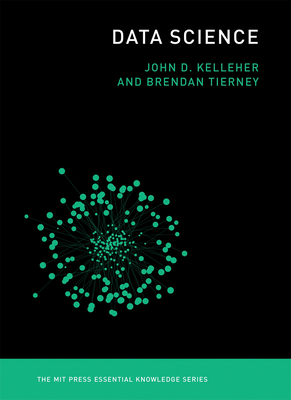Fast Track to Hibernate 3.x Training in Billings
|
We offer private customized training for groups of 3 or more attendees.
|
||
Course Description |
||
| Hibernate is a 3 day open source object/relational (OR) persistence and
query service for Java. Hibernate lets you develop persistent classes
following common Java idioms - including association, inheritance,
polymorphism, composition and the Java collections framework. The
Hibernate Query Language, designed as a minimal object-oriented
extension to SQL, provides an elegant bridge between the object and
relational worlds. Hibernate also allows you to express queries using
native SQL or Java-based Criteria and Example queries. JBoss has
integrated Hibernate into its JEMS (Java Enterprise Middleware System)
product line. The Java Persistence API (EJB 3) specification derives a
great deal of its architecture from Hibernate, and the Hibernate
annotations are compatible with the Java Persistence annotations. This
promises to make Hibernate an even more important technology.
Course Length: 3 Days
Course Tuition: $1290 (US) |
||
Prerequisites |
|
| Intermediate knowledge of Java programming and a basic understanding of relational databases are recommended. | |
Course Outline |
|
Introduction to Hibernate
Issues with Persistence layers and Object-Relational Mapping (ORM)
Hibernate Overview and Benefits
Hibernate architecture overview
Configuring Hibernate
hibernate.cfg.xml file, Connection properties, Database dialect
SessionFactory, Configuration, and Session
Mapping a Class
Persistent Entity Class, Hibernate Mapping File, Mapping the Entity Class
Primary keys: Id property, Generated Id
Hibernate Type System
Working with sessions and Persistent Objects
Logging: hibernate.show_sql, log4j Overview and configuration for Hibernate
Updates and Queries
Inserting, Updating, and Deleting Entities
HQL - Hibernate Query Language Overview
The Query Interface
Creating and working with queries
Named Queries, Projection Queries, Aggregate Queries
The Persistence Lifecycle
Transaction Overview and Transactions in Hibernate
Hibernate Transaction API (in Managed and Non-managed Environments)
The lifecycle of managed objects
Persistent, transient, and detached objects
The Persistence (Session) Context (Lifespan, Relation to Managed Objects, Propagation)
Contextual Sessions
Synchronization to the Database
The Session as cache
Optimistic Locking / Versioning
Detached Objects and Optimistic Locking
Versioning overview and Using Versioning
Locking Objects
Relationships
Object Relationship Overview
Mapping Collections of Value Objects
Entity Relationships: 1-N, N-1, N-N, 1-1
Mapping Entity Relationships
Uni and Bi-directional Relationships
The Relationship "inverse"
Cascading Over Relationships
Queries Across Relationships (Lazy and Eager)
Inheritance Mapping
Entity Inheritance with Hibernate
Table-per-class mapping
Table per Subclass mapping
Table per Concrete Class mapping
Additional Querying Capabilities
Projection Queries, Aggregate queries, Bulk updates and deletes, Native SQL Queries
Query Filters
The Criteria API
Overview of the Criteria API
Working Querying with the Criteria API
Query by Example
Hibernate and Java Persistence / EJB 3
Overview of Java Persistence / EJB 3
Relationship between Java Persistence and Hibernate
Mapping Entities with JPA Annotations
The EntityManager, Persistence Context and Persistence Unit
Working with Transactions - EntityTransaction, Managed, and Unmanaged Environments
Inserts and Updates
JPQL - Java Persistence Query Language
Versioning
Relationships
Caching
Understand caching advantages and behavior
The persistence context as first level cache
The Second Level Cache
Entity and Collection Caching
Integration Considerations
Data Access Objects
Integrating Hibernate and Java Web Apps
Open Session in View Pattern
Hibernate / EJB-JPA Integration
Additional Topics
Components and Multi-Table Mapping
equals() and hashCode()
Design Considerations
Hibernate Toolset
Hibernate and Spring Integration
Spring Introduction
Dependency Injection Overview
Spring's Hibernate Support
Spring Transaction Management
|
Course Directory [training on all levels]
- .NET Classes
- Agile/Scrum Classes
- AI Classes
- Ajax Classes
- Android and iPhone Programming Classes
- Azure Classes
- Blaze Advisor Classes
- C Programming Classes
- C# Programming Classes
- C++ Programming Classes
- Cisco Classes
- Cloud Classes
- CompTIA Classes
- Crystal Reports Classes
- Data Classes
- Design Patterns Classes
- DevOps Classes
- Foundations of Web Design & Web Authoring Classes
- Git, Jira, Wicket, Gradle, Tableau Classes
- IBM Classes
- Java Programming Classes
- JBoss Administration Classes
- JUnit, TDD, CPTC, Web Penetration Classes
- Linux Unix Classes
- Machine Learning Classes
- Microsoft Classes
- Microsoft Development Classes
- Microsoft SQL Server Classes
- Microsoft Team Foundation Server Classes
- Microsoft Windows Server Classes
- Oracle, MySQL, Cassandra, Hadoop Database Classes
- Perl Programming Classes
- Python Programming Classes
- Ruby Programming Classes
- SAS Classes
- Security Classes
- SharePoint Classes
- SOA Classes
- Tcl, Awk, Bash, Shell Classes
- UML Classes
- VMWare Classes
- Web Development Classes
- Web Services Classes
- Weblogic Administration Classes
- XML Classes
Java Programming Uses & Stats
|
Difficulty
|
Popularity
|
Year Created 1995 |
|
Pros
Most Commonly Used:
Great Career Choice:
Android Apps Development:
It Can Run On Any Platform:
Great Supporting IDE's: |
Cons
Uses a Lot of Memory:
Difficulty in Learning:
Slow Start Up Times:
Verbose and Complex Code:
Commercial License Cost: |
| Java Programming Job Market |

Average Salary
|

Job Count
|

Top Job Locations
New York City |
|
Complimentary Skills to have along with Java Programming
- If you are an experienced Java developer, learning a complimentary language to Java should come much more naturally. As an example JetBrains recently created the Kotlin programming language which is officially supported by Google for mobile development. Kotlin compiles to Java bytecode and runs on the JVM; it's purported to address many of Java's shortcomings... |






